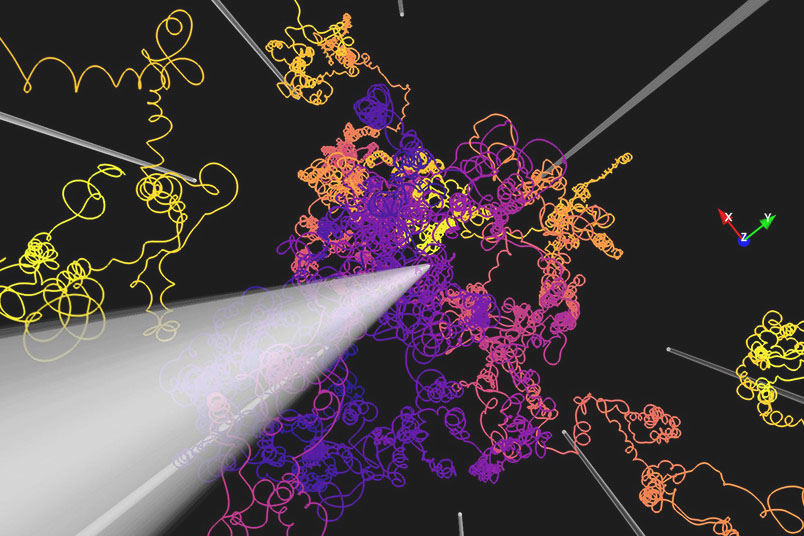| Sep 13, 2022 |
Simulation aids the search for the origin of cosmic rays
|
|
(Nanowerk News) An international research team has developed a computer programme that can simulate the transport of cosmic rays through space. The researchers hope it will help them solve the mystery of the sources of cosmic rays. So far, we do not know which celestial objects emit the high-energy radiation that pelts the Earth from space. Theoretical models are necessary to explain experimental data; the new computer simulation can provide these.
|
|
A team of researchers from Ruhr-Universität Bochum (RUB) describes the software in the Journal of Cosmology and Astroparticle Physics ("CRPropa 3.2 – an advanced framework for high-energy particle propagation in extragalactic and galactic spaces").
|
 |
| The coloured lines show how cosmic rays are deflected in magnetic fields. The white straight lines represent a large-scale magnetic field. In addition, small-scale magnetic fields not shown here act on the paths of the particles (coloured lines). (Image: Dr. Lukas Merten)
|
Like an evenly illuminated sky during daytime
|
|
Since their discovery 100 years ago, researchers have been attempting to decipher where cosmic rays come from. The problem is that, viewed from Earth, they look like the sky during daytime to the naked eye, namely: equally brightly illuminated almost everywhere we look. This is because the light from the Sun is scattered in the Earth’s atmosphere and spreads evenly across the entire sky.
|
|
Cosmic rays are also scattered on their way to Earth – through interactions with cosmic magnetic fields. All we can see from Earth is an evenly illuminated image; the origin of the radiation remains hidden.
|
Particle trajectories simulated all the way from production to detection
|
|
“Our programme CRPropa enables us to trace the trajectories of particles from their formation to their arrival on Earth – and this for all energies that we can observe from Earth,” says Julien Dörner, PhD student at RUB. “We can also fully account for the interaction of the particles with matter and photon fields in the Universe.”
|
|
The programme can simulate not only cosmic ray propagation, but also signatures of neutrinos and gamma rays that are produced in cosmic ray interactions.
|
|
“Unlike cosmic rays, these messenger particles can be observed directly from their sources, as they come to Earth on a straight path,” explains Dr. Patrick Reichherzer, postdoctoral researcher at RUB. “We can also use the software to predict such signatures from neutrinos and gamma rays from distant galaxies such as starbursts or active galaxies.”
|
|
The presented simulation programme is currently the most comprehensive software and opens up new windows to the Universe.
|
|
“We can explore new energy ranges in the simulation that couldn’t fully be captured in such detail with the programmes available to date,” says Professor Karl-Heinz Kampert from the University of Wuppertal. “Most importantly, we can develop a theoretical model that describes the transition from cosmic rays from our own Galaxy to a fraction coming from distant galaxies and compare it with observations.”
|
Theoretical calculations essential to interpret experimental data
|
|
The simulation programme was developed as a result of an international collaboration of 17 researchers from Germany, Spain, the Netherlands, Italy, Croatia, England and Austria. With eight researchers, the RUB is a lead partner in the project. The project was conducted as part of the Collaborative Research Centre (CRC) 1491 “The Interplay of Cosmic Matter”, funded by the German Research Foundation.
|
|
CRC spokesperson Professor Julia Tjus from the RUB points out: “The publication is a major step towards a quantitative description of the transport and interaction of cosmic rays in three dimensions. CRPropa will significantly contribute to understanding where cosmic rays come from. After all, we need theoretical calculations to help us interpret the variety of data we receive from the various instruments monitoring the cosmos.”
|

